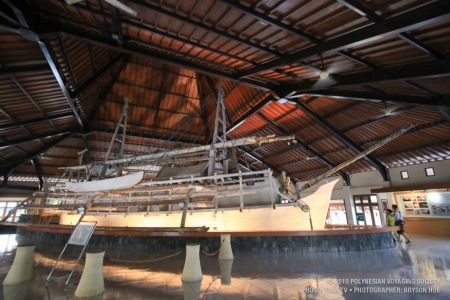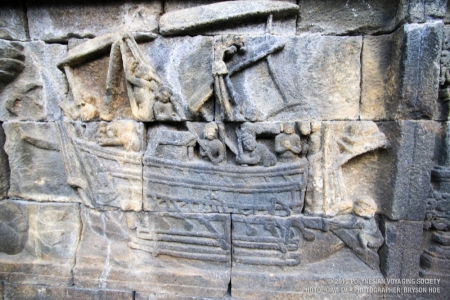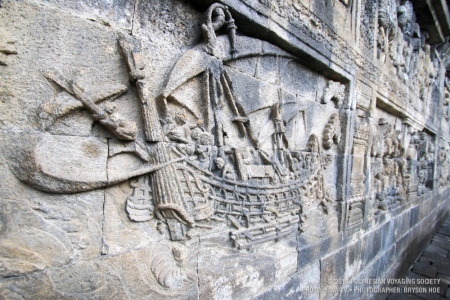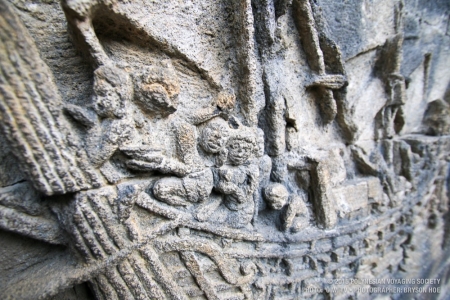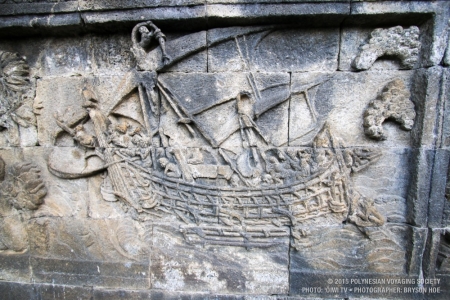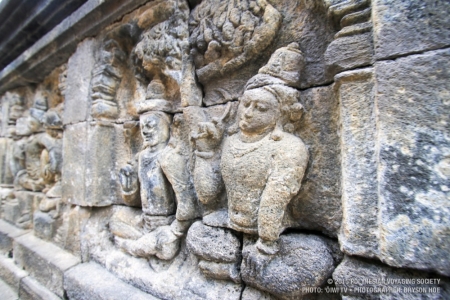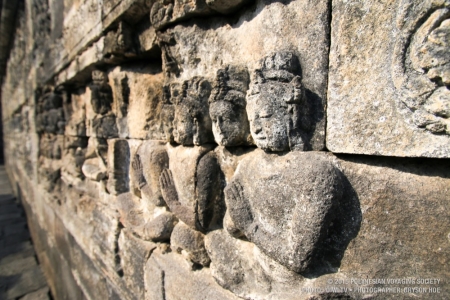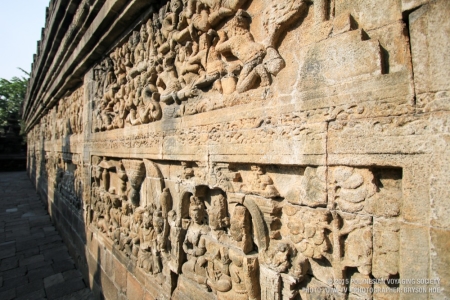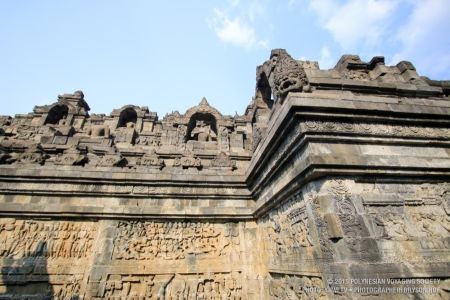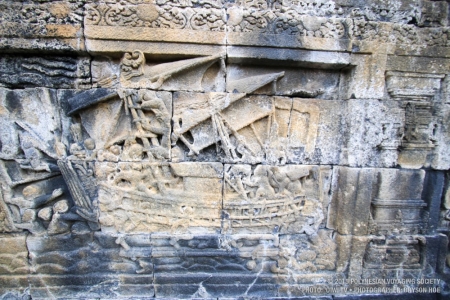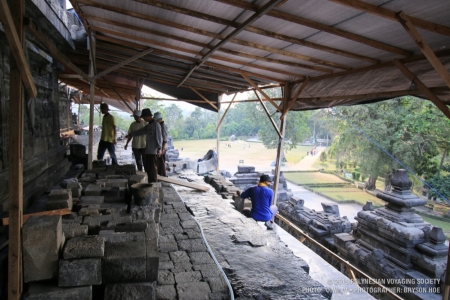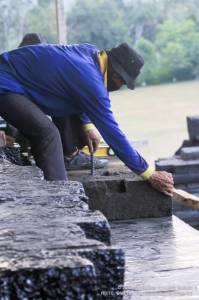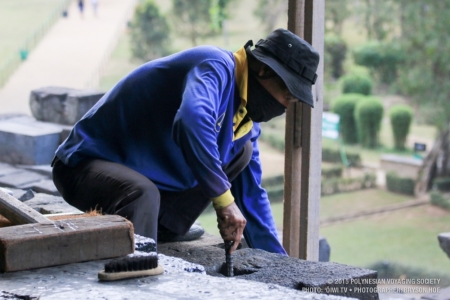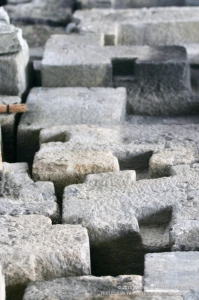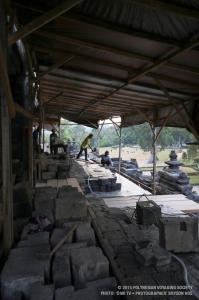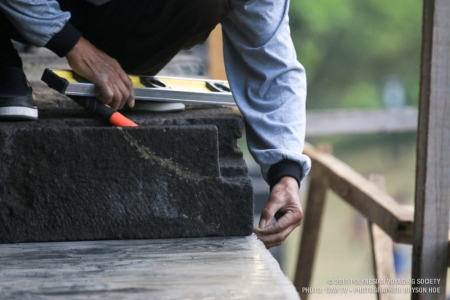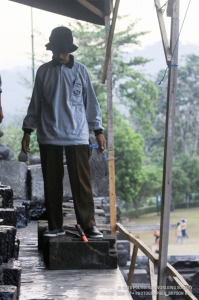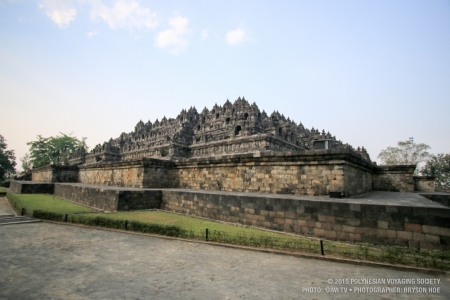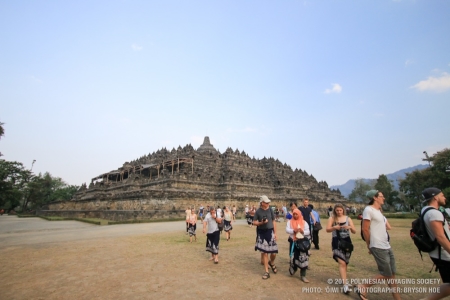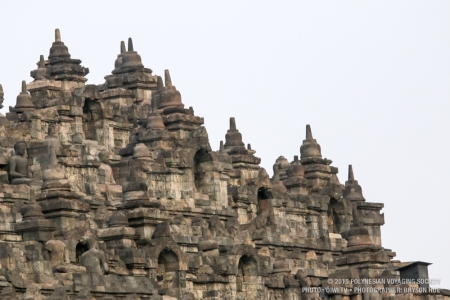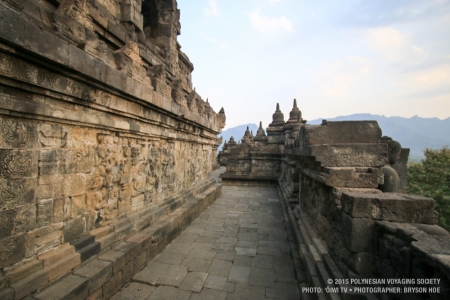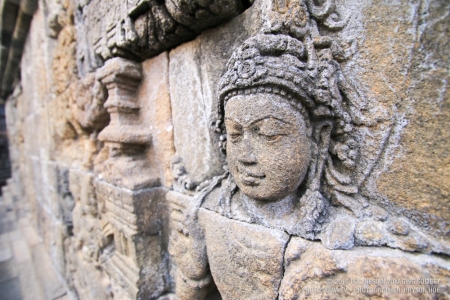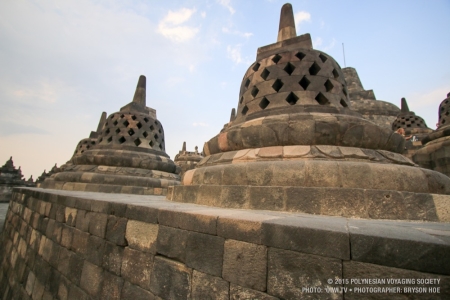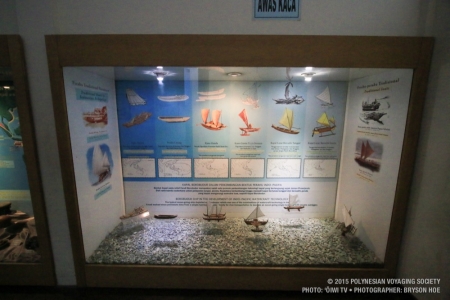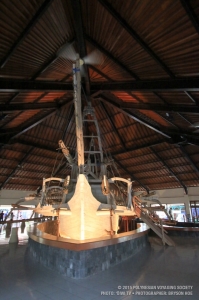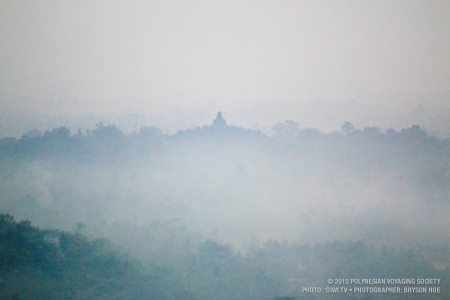
Crew Blog | Miki Tomita: Borobudur Temple, An Ancient Ship brought to Life
- Posted on 11 Aug 2015
- In Crew Blogs, Malama Honua, Malama Honua Selects, Newsletter, Teachers
 Written by Miki Tomita.
Written by Miki Tomita.Under the cover of darkness, we ascended a small hill in the remote region of
 Slowly, the sky lightened, heavy with mist and volcanic fog. The temple remained shrouded in mist, barely visible but powerful and peaceful in its presence. Built from over 2 million stone blocks, Borobudur sits aligned with four stairways at each main compass point (East, South, West, and North), and consists of three major vertical levels – Kamadhatu (the foot of the temple, representing the lowest sphere and the realm of ordinary humans), Rapadhatu (the body of the temple, representing the realm between earthly desire and the realm of the gods, and Arupadhatu (the top of the temple, representing the place of the gods).
Slowly, the sky lightened, heavy with mist and volcanic fog. The temple remained shrouded in mist, barely visible but powerful and peaceful in its presence. Built from over 2 million stone blocks, Borobudur sits aligned with four stairways at each main compass point (East, South, West, and North), and consists of three major vertical levels – Kamadhatu (the foot of the temple, representing the lowest sphere and the realm of ordinary humans), Rapadhatu (the body of the temple, representing the realm between earthly desire and the realm of the gods, and Arupadhatu (the top of the temple, representing the place of the gods).
The entire temple tells the story of the teachings and life of the Buddha, and of the environment and culture of Java at the time the temple was constructed conveyed through carvings etched in the stones called relief panels. The are almost 3,000 relief panels distributed over the 2 million stone blocks. The temple has been under restoration since the 1970s since becoming a UNESCO World Heritage Site, with broken or shattered stones replaced by new ones in a continuous rebuilding process to maintain structural integrity for the 58,000 visitors the site sees daily during peak season. As part of the archaeological protocol, the new stones are not carved to match the old ones; over time, as stones are replaced to maintain the structure and safety of the temple, the stories etched by the 8th century craftsmen are slowly erased, and with it the voice of the ancestors.
 One of the ways that the Indonesian community has prevented this erasing of the record is through the building of the Borobudur Ship. Touring the temple and its relief carvings, you can find several panels that depict ships that crossed to Indonesia through the Indian Ocean, bringing followers of the Buddha in search of enlightenment. One of the relief carvings is the inspiration for the Borobudur Ship, which was built based on the details of the stone carvings. Similar to Hōkūleʻa, this ship was brought into existence based on a record without words, one that lay sleeping in the stones until the moment when it could be awakened by those who could answer the call. The ship sailed successfully from Indonesia to Madagascar to Africa, retracing the Cinnamon Route, with crewmembers from local communities practicing traditional wayfinding standing beside scientists searching for evidence of migration patterns and seafaring traditions, before coming home to rest in the Samudra Raksa Museum on the temple grounds.
One of the ways that the Indonesian community has prevented this erasing of the record is through the building of the Borobudur Ship. Touring the temple and its relief carvings, you can find several panels that depict ships that crossed to Indonesia through the Indian Ocean, bringing followers of the Buddha in search of enlightenment. One of the relief carvings is the inspiration for the Borobudur Ship, which was built based on the details of the stone carvings. Similar to Hōkūleʻa, this ship was brought into existence based on a record without words, one that lay sleeping in the stones until the moment when it could be awakened by those who could answer the call. The ship sailed successfully from Indonesia to Madagascar to Africa, retracing the Cinnamon Route, with crewmembers from local communities practicing traditional wayfinding standing beside scientists searching for evidence of migration patterns and seafaring traditions, before coming home to rest in the Samudra Raksa Museum on the temple grounds.
 We visited the museum, and were delighted and awed to find information about our voyaging canoes included in the displays. We presented the Conservatory and Museum with a plaque made from a piece of the original iako from Hōkūleʻa, which will join the museum display.
We visited the museum, and were delighted and awed to find information about our voyaging canoes included in the displays. We presented the Conservatory and Museum with a plaque made from a piece of the original iako from Hōkūleʻa, which will join the museum display.
After the visit to the temple, our crewmembers presented information about our voyage to the Conservatory scientists and researchers, and they presented information about theirs – the voyage to restore the temple, to revitalize pride in their people through the building and sailing of the ship, and the struggle to balance tourism as an industry with protection of environmental and cultural resources. We discussed ways in which Hōkūleʻa has helped to build pride and confidence in Hawaiʻi, and has been part of the movement that inspired the revitalization of language, culture, and environment. Our Indonesian friends observed that all of us in this world are searching for connections – between our past, present and future; between people around the world – and finding that we are at once both the same and vastly different in beautiful ways.
We have sailed Hōkūleʻa across the Pacific in the wake of our ancestors, and launched into the Indian Ocean looking for a new horizon. What we have found is that the sun rises and sets as it has since the beginning of time, guiding us towards a deeper ancestral past than we have yet encountered in Hōkūleʻa’s 40 years. Thank you to the Borobudur Conservatory for sharing with us your story of hope, and for celebrating with us the wisdom of our ancestors in crossing deep oceans together.
Please help keep us sailing for future generations. All contributions make a difference for our voyage. Mahalo nui loa!
